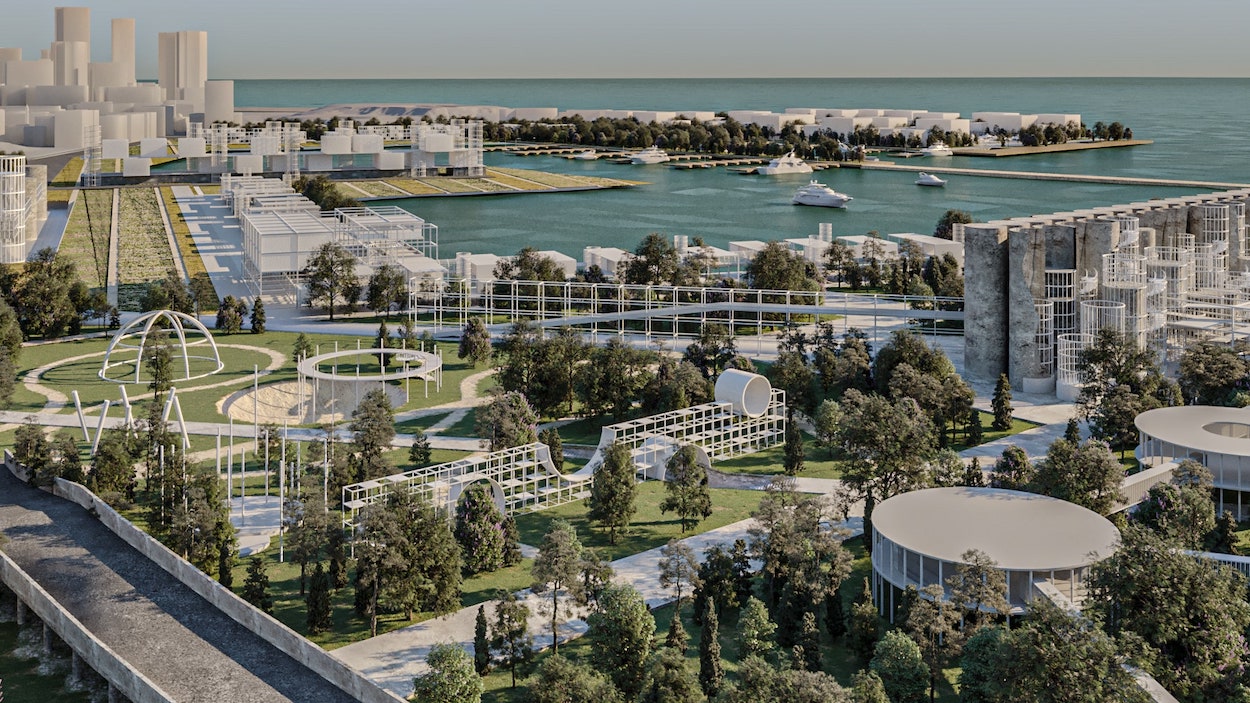Last summer, a large amount of ammonium nitrate improperly stored at Beirut’s port exploded, sending shock waves throughout the city as buildings crumbled and more than 300,000 people were left homeless. Four days after the disaster, IDAR-Jerusalem launched the Haifa Awards International Program to promote innovative design solutions for “cities at risk.” The inaugural Phoenix Prize, one of the program’s major components, tasked global architects to reconceive Beirut’s port following the blast.
The winning entry, called “The Aftermath—A Productive Beirut,” reimagines the port into a vibrant, economically self-sustaining public park and market that’s completely open to the city. It’s courtesy of a four-person team of Palestinian designers Alaa Abu Awad, Mais Bani Odeh, and Majd Al-Malki, as well as Diala Andonia from Bethlehem. The team drew inspiration from a viral image of the port’s damaged grain silos with graffiti underneath saying “my government did this.”
From there, the quartet’s vision evolved into a full-fledged “people’s park”—one that employs design ingenuity and a deep understanding of Beirut’s social and political histories to execute. According to Al-Malki, the team “noticed Beirutis [complaining] on social media, saying ‘We don’t need another monument. We need food, housing, jobs—not just something to look at.” Considering how the port once provided 60 percent of Lebanon’s imports, the blast only intensified the widespread food shortages, economic turmoil, and unemployment gripping the country as a result of the pandemic and long-term government corruption. This bold proposal for the port’s future that responds to the needs of Beirutis, it turns out, took on newfound urgency.


